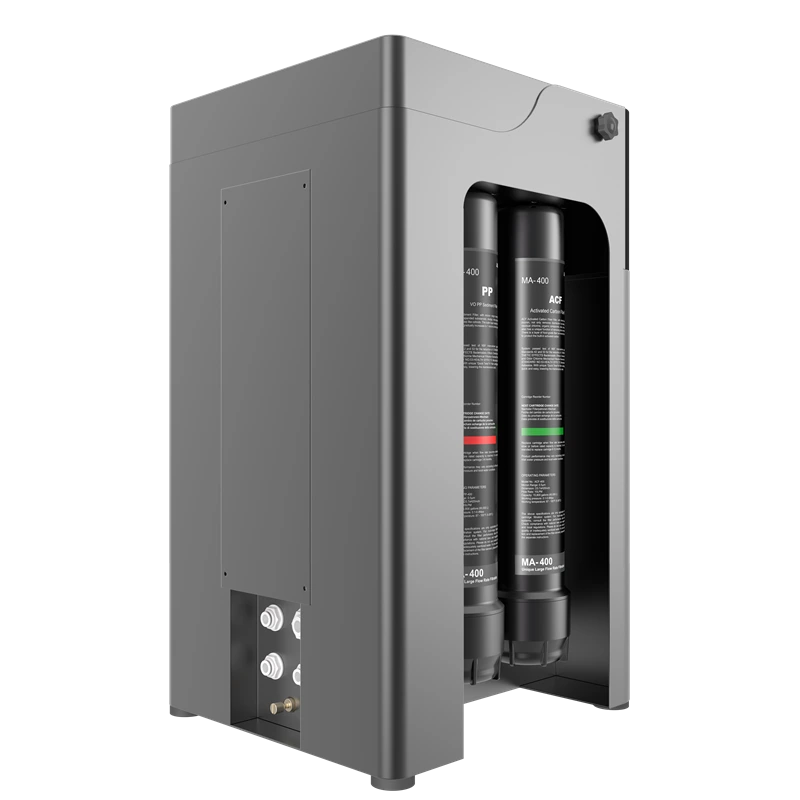Water Purification Basics|Choosing the Right Purification Method Makes Drinking Water Simple!
Today, I'd like to discuss a topic we all encounter daily—the safety of drinking water and how to select purification methods. We've all heard the advice to ‘drink plenty of hot water,’ but have you ever considered whether the water we consume daily is truly safe? Does it require further filtration? With the myriad water purification devices available on the market, it can feel overwhelming. Fret not—today I'll guide you through these essential water purification basics, empowering you to effortlessly manage your household's vital water needs!

Why prioritise household water safety?
At this point, some might wonder: ‘Isn't our tap water already disinfected? Why bother buying a purifier?’ While municipal water undergoes rigorous treatment, its journey from the plant to your tap involves complex challenges. Aged pipes, secondary contamination, residual chlorine... all these factors can compromise the purity of the water you ultimately consume. For children, the elderly, or those with sensitive constitutions, a reliable water purification method is truly essential!
What are the mainstream water purification methods available?
I've noticed many friends immediately think of bottled mineral water plus boiling when discussing ‘home purification’. But today's market offers far more options! The most common include: activated carbon filter cartridges, ultrafiltration membranes, RO reverse osmosis systems, and whole-house solutions like central water softeners.
Let's examine their respective characteristics:
• Activated carbon filtration: Excels at odour removal, adsorbing unpleasant smells and some impurities. Affordable but only captures larger particles.
• Ultrafiltration membrane filtration: Features smaller pores, effective against bacteria but less potent against dissolved substances like heavy metals.
• RO Reverse Osmosis: Blocks nearly everything, including heavy metals, bacteria, and viruses. However, it also removes beneficial minerals and generates wastewater, so eco-conscious individuals should take note.
• Central Water Softener/Whole-House Filtration: Typically suited for larger homes or those prioritising quality of life. Enhances bathing and laundry comfort while protecting appliances from limescale damage.

Suitability is paramount, as every household's needs differ.
Many ask: ‘Does more expensive always mean better?’ Well, it's not quite that simple. The key is selecting based on your home's actual circumstances, or you'll be wasting money! For instance, if you live in a southern city where tap water tastes fine and has no unpleasant odours, consider a compact countertop unit with activated carbon or ultrafiltration – economical and space-saving. If you reside in a northern region with hard water, frequently noticing white crystalline deposits at the bottom of your kettle after boiling, adding a softening function would be most welcome. For households with children or expectant mothers who prioritise health and find the local tap water has a pronounced chlorine taste, investing in a reverse osmosis (RO) system from the outset is advisable. For those prioritising convenience—such as those in rented accommodation—portable tap-on/tap-off water dispensers offer hassle-free use and can be easily moved when required.
What noticeable changes occur in drinking water quality after purification?
Once you begin using a suitable water purification system, you'll notice a significant improvement in your quality of life! Tea brews without off-flavours, cups no longer harbour stubborn yellow deposits, and preparing infant formula becomes far more reassuring. Some may initially wonder, ‘Why doesn't RO water have that mineral-rich depth like bottled spring water?’ Rest assured, this is primarily because RO filters out dissolved minerals, resulting in a lighter taste—though it remains absolutely safe and hygienic. For those who prefer that naturally sweet, mountain-spring sensation, newer models with trace mineral adjustment functions are available.
Incidentally, here's a little-known fact: when cooking daily meals, using deeply treated purified softened water not only leaves your pans perfectly dry and clean, but also preserves the natural flavours of vegetables and meats while reducing cooking fumes!
How to scientifically maintain and use your machine to extend its lifespan?

Many complain about ‘problems arising after just six months’ or ‘new machines being sluggish’. In truth, 80% of these issues stem from neglecting routine maintenance. Regardless of the filter type, they must be replaced regularly as per the manufacturer's recommendations. Otherwise, over time they become breeding grounds for contaminants!
Another tip: close the inlet and outlet valves daily when not in use to prevent abnormal internal pressure. During power or gas outages, remember to flush the system for three minutes before use to expel accumulated debris.
Friendly reminder: regularly check water flow consistency and taste. Should you notice reduced flow or unusual odours, promptly contact after-sales for inspection.
Future Trends: New Technologies for Smarter Drinking
Increasingly, brands are launching smart-linked versions. Features like remote monitoring of filter lifespan via mobile apps and real-time water quality reports add a robust safeguard to household drinking water. Designs are also becoming more aesthetically pleasing, ranging from traditional bulky units to compact desktop models. Whether for a studio flat or a multi-generational household, there's a suitable option for every space.
Having said that, Susan would like to emphasise: by mastering the fundamentals and selecting based on your living environment and actual needs, you needn't be swayed by flashy marketing claims. Healthy hydration begins with small, mindful choices; true suitability reigns supreme, for every household's circumstances are unique!
Finally, a cheeky question: what solution does your household currently use? Share your thoughts in the comments below! 💕
 Reverse Osmosis Scaling Right After Startup? Here's What You Need to Know About Prevention and Treatment!
Reverse Osmosis Scaling Right After Startup? Here's What You Need to Know About Prevention and Treatment!
 Reverse Osmosis Scaling Right After Startup? Here's What You Need to Know About Prevention and Treatment!
Reverse Osmosis Scaling Right After Startup? Here's What You Need to Know About Prevention and Treatment!
 Three Certain Trends in Commercial Water Purification Over the Next Five Years
Three Certain Trends in Commercial Water Purification Over the Next Five Years
 Eight Different Methods for Pure Water Treatment Equipment Processes
Eight Different Methods for Pure Water Treatment Equipment Processes